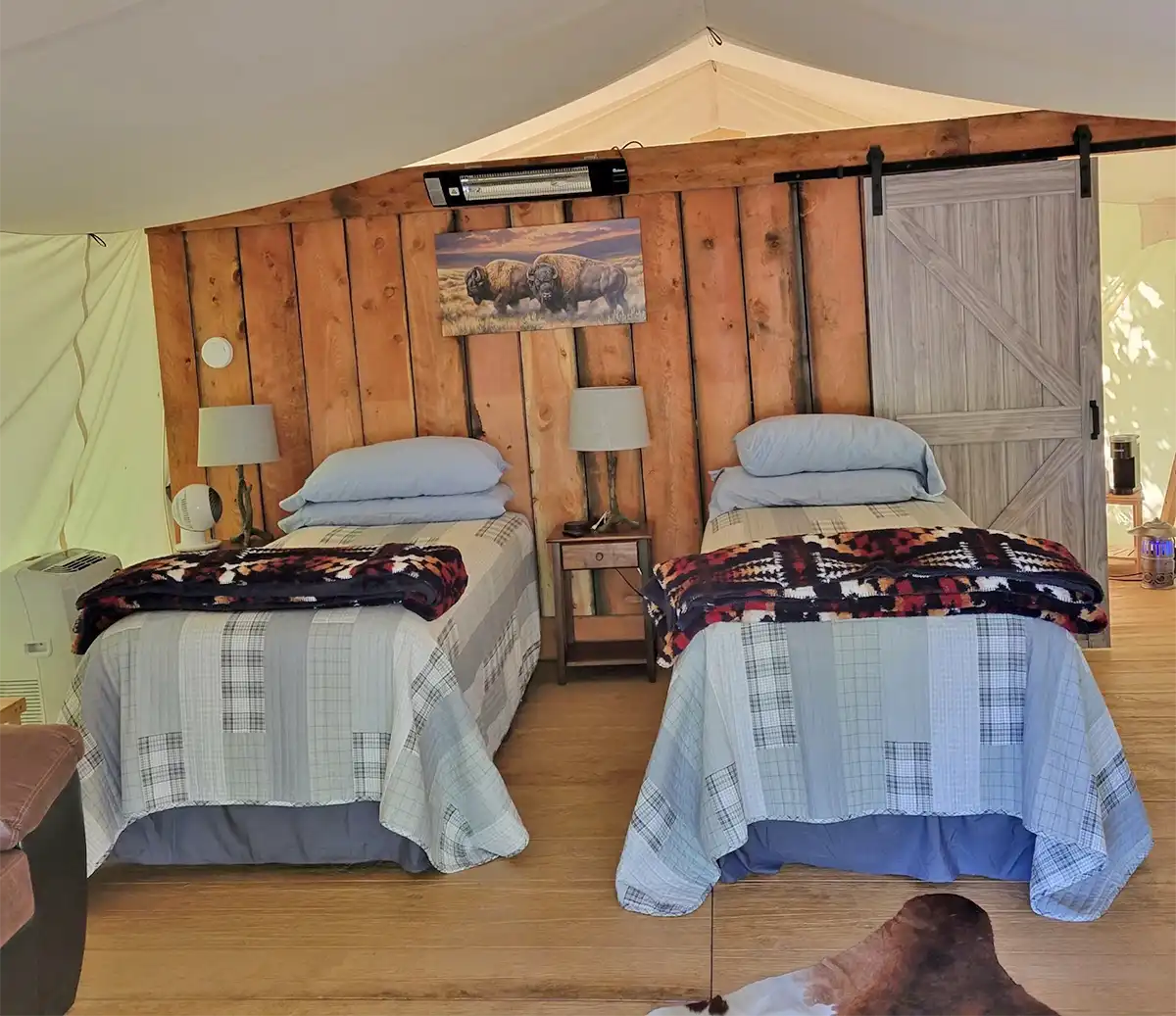The Stillwater River:
The Stillwater is a free-stone river that flows out of the gorgeous Beartooth Mountain Range cutting its way through granite rocks that creates a gorgeous backdrop. If a list were ever compiled of misnamed rivers, then surely the Stillwater would be near the top of the list. Despite its name, the Stillwater River has whitewater, drops, rocks, and a very swift current depending on the current flow rate.
This is definitely a dry fly fishing river and fishing this pocket water stream with a big hopper or stonefly pattern can be awesome with strong, fighting cutthroats, rainbows, brook trout, and brown trout averaging 10 - 16″, though fish up to 22″ are possible.
Typically fishing this stream starts by early July via rafts but, good wade fishing can also be had in the early spring with very good mayfly hatches starting around early March through mid-May. During the summer the Stillwater produces some of the best dry fly fishing in Montana.
March Brown's and Baetis are the highlights of the Spring season and wade fishing is often the best option. As flows are higher and we start using rafts to effectively fish we see hatches of PMDs, Golden Stones, Yellow sallies, and Caddis. As the summer heat kicks in major hatches subside and various attractors, grasshoppers, beetles, and ants are the norm.
Boulder River:
Montana’s Boulder River is a hidden, fly fishing gem of the upper Yellowstone Drainage. Small, fast, and aptly named, the Boulder is hard to beat. The river’s out of the way location, combined with its proximity to other major, better known, rivers, tend to keep fishing pressure in the moderate range. Like the Stillwater, movies such as The Horse Whisper and A River Runs Through It chose areas on this river to film.
Our floats on the Boulder, depending on water levels, start below the Natural Bridge State Monument a stretch excellent for dry fly fisherman and streamer fisherman alike. Using large streamers in the many deep holes and along the undercut banks is a wonderful way to catch the rivers large brown trout. For the dry fly angler, the Boulder River has excellent caddisfly hatches throughout the summer. Just use a large hopper, floating it right along the banks, picking up brown trout and rainbow trout as you go. A person on a Montana fly fishing trip in July should always have lots and lots of hoppers.
During the summer, due to the relatively low fishing pressure, standard dry flies like the Parachute Adams and Elk Hair Caddis work very well. Of course, as the Boulder River flows through ranch country with lots of hay fields, it is also prime hopper fishing water come late July through August.
Golden Stones - early July can boast some excellent dry fly and nymphing for good size trout. Mayflies - July has excellent numbers of PMDs. Caddis - July and early August have our annual summer Caddis. Caddis, Elk Hair Caddis, and small Pheasant tail droppers are most effective. Terrestrials - Hoppers and beetles are excellent options as the August heat sets in.
Small Streams -
East / West Forks of the Rosebud River (The Buds):
The Ranch has 1.5 miles of East Rosebud River running through it, The Buds, generally very similar walk/wake streams above their confluence, are located in the beautiful high prairie just to the north of the Absaroka-Beartooth Wilderness Area. The forks flow together just south of Absarokee into the Rosebud River but, only flows four miles to its confluence with the Stillwater River. For an angler looking for a pretty place to fish, the forks of the Rosebud are hard to beat.
Rosebud River itself has very good brown and rainbow trout fishing, similar to that found in the lower sections of its forks. Streamers, hopper imitations and standard dry flies all work well on the prairie sections of the forks of Rosebud River. The average fish size will be 10 - 14” with an occasional lunker in the 18 - 20” range.
One of our favorite floats is to launch from private access on East Rosebud fork just above its confluence with the West fork, float the Rosebud River then into the Stillwater River. Fishing pressure is quite light. Lighter tackle and tippets provide the best chance of success. An excellent Montana fly fishing experience!
April and early May, before the run-off, March Brown's and Baetis are best. Hopper imitations work excellent later in the summer. Streamers are also effective, weighted down and fished around the downfall, in the holes and by the undercut banks.
March Brown's and Baetis are the highlights of the Spring season and wade fishing is often the only option. After run-off we see hatches of PMDs, Golden Stones, Yellow Sallies, and Caddis. As the summer heat kicks in major hatches subside and various attractors, grasshoppers, beetles and ants are the norm. Lots of large rocks in the river also provide lots of pocket water fishing with standard dry flies, such as the Parachute Adams and the Elk Hair Caddis.
Rock Creek:
This 'Rock Creek', a favorite walk/wade blue-ribbon trout stream, begins high in the mountains of the Absaroka-Beartooth Wilderness and flows for more than 55 miles, through Red Lodge, to the confluence with the Clarks Fork of the Yellowstone River.
Rock Creek leaves the mountains behind at the town of Red Lodge, and enters a beautiful rolling, prairie landscape that lasts until the river’s end. Throughout its prairie section, Rock Creek has thick cottonwood trees and brush lining its banks and has rocks everywhere. It also splits into a number of channels, most of which run dry later in the summer. The water in Rock Creek is crystal clear except during spring run-off. It is also quite cool, reflecting the origin of the river high in the mountains and the fact that its primary tributaries consist of high alpine creeks and streams.
After ice melt and before the run-off, the mountain section of Rock Creek, above Red Lodge, is home to lots of small cutthroats and brook trout. They are easy to catch on virtually any dry fly with a halfway decent presentation. The fish are small but feisty and are fun to catch. Below Red Lodge dry flies work just as well on this section of Rock Creek as they do further upstream. Fishing pressure is quite light, and the rainbow trout rise readily to a fairly well presented dry fly imitation. PMD imitations and the Parachute Adams are excellent dry flies for this river. When chasing after the larger brown trout on Rock Creek, streamers are effective, especially in the fall when the fish move out of their protective cover.
Yellowstone River:
The Stone is the longest free-flowing river in the United States and is internationally known as the premier trout fishery. Besides being home to large brown, cutthroat and rainbow trout, the river itself has such a wide variety of habitat that it offers excellent dry fly fishing as well as sub-surface fishing with nymphs and streamers.
Due to The Stones length in Montana and the fact that quality trout fishing is found from Billings upstream to Yellowstone National Park (160 miles), we focus our float trips to find the perfect balance of floating pressure with strong fish numbers and draw on our in-depth local knowledge considering the time of year, water conditions, and active insect hatches.
The Yellowstone River is one of those that fish well nearly all season long. The only time we don't recommend fishing is during the annual spring run-off that typically starts in mid-May and lasts through June. It fishes particularly well in March and April, prior to the run-off and again just after run-off in July through October.
March and April are often overlooked, but produce the most reliable hatches including March Brown's, Baetis and the often spectacular Mother's Day Caddis hatch. Post run-off, Salmonflies, Golden Stones, Green Drakes, PMDs, Caddis, and Yellow sallies are present, sometimes in great numbers. As summer heats up Grasshoppers, ants, beetles, and the Giant Western Golden Stones are present. Fall brings Drakes, Baetis, and midges.
The Bighorn:
Although it is a good drive from the Lodge, Montana Fly Fishing lodge will take willing anglers to the Bighorn. The Horn is a tailwater fishery that has drawn anglers from around the world since it was first opened to public recreational fishing in 1981, and the trout have kept them coming back again and again. With more fish packed into each mile of its waters than any other river in Montana, the Bighorn River boasts great numbers of brown trout and rainbow trout and consistent early season fishing beginning in March and going all the way through November.
Yellowstone Park High Country Streams:
Walk/Wade the upper Lamar River and Soda Butte Creek, northeastern corner of the park. Fly fishing in Yellowstone National Park is an experience not to be missed! Enjoy the spectacular wildlife and scenery of America’s first national park while you cast big dries to eager native Yellowstone Cutthroat Trout.
The trip of a lifetime. We primarily fish the waters in the northeast corner of Yellowstone National Park – the Lamar River and Soda Butte Creek. These are some of the best cutthroat trout fisheries in the country. The scenic drive over Beartooth Pass and into Yellowstone National Park (about 90 minutes each direction from The Ranch) is spectacular. You’ll pinch yourself as you fly fish among herds of wild bison.
















